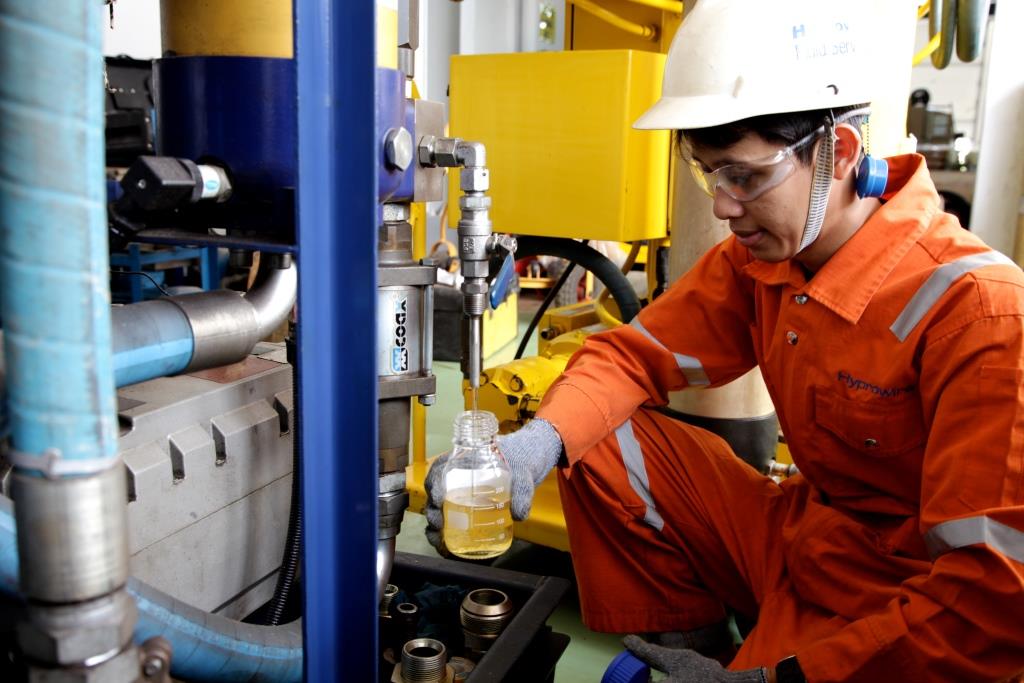
Understanding Flash Point Test and various test methods used to generate accurate results
The lowest temperature at which a volatile product becomes vapour or gas flammable when given a source of ignition is called “The Flash Point” of the substance.
To determine the flash point of the substance, we have to heat it, and at a particular temperature, it will ignite or burn or catch fire or “flash” when given an ignition source.
In a laboratory, under specified conditions, 100 ml of sample is taken in a brass vessel and slowly and steadily heated and the “flash point” is the lowest temperature at which an ignition source causes the vapours of the sample to “flash”. The sample is said to have “flashed” when volatile vapours at the top of the sample catch fire for an instant and then get extinguished with a “pop” like sound.
Flash Point is often confused with Auto – Ignition temperature which is the point or temperature at which a product will self-ignite or have spontaneous ignition.
Flash Point is also often confused with Fire Point which is the point or temperature at which the product will give a sustained flame or fire.
Hence, the lower the flash point of a substance the faster it will ignite.
From a vast variety of methods of determining the Flash Point – which can be divided into two most important categories are – Open Cup and Closed Cup.
Open Cup Flash Point
As the name indicates, the flash point is measured while exposing it to outside air or atmosphere.
Closed Cup Flash Point
As the name indicates, the flash point is measured in closed conditions, without exposing it to outside air or atmosphere.
Thereafter the most widely accepted methods are Cleveland Open Cup (COC), Abel Closed Cup, Pensky-Martens Closed Cup (PMCC) and Seta-Flash.
Methods used in Atlas Lab for determination of Flash Point : Open Cup Flash Point – Cleveland Open Cup (COC)
METHOD | DESCRIPTION |
ASTM D92 | Standard Test Method for Flash and Fire Points by Cleveland Open Cup Tester |
ISO 2592 | Determination of flash and fire points — Cleveland open cup method |
IP 36 | Determination of flash and fire points of petroleum products by Cleveland open cup |
JIS K2265-4 | Determination of flash point – Part 4: Cleveland open cup method |
ASHTO T48 | Determination of the flash point and fire point of petroleum products by a manual Cleveland open cup apparatus or an automated Cleveland open cup apparatus |
IS 1448 – Part 69 | Determination of Flash and Fire points – Cleveland Open Cup Method |
DIN 51376 | Flash and Fire Points by Cleveland Open Cup Tester |
FTM 791-1103 | Flash and Fire Points by Cleveland Open Cup Tester |
FTM 141-4294 | Flash and Fire Points by Cleveland Open Cup Tester |
Abel Flash Point
METHOD | DESCRIPTION |
ISO 13736 | Determination of flash point — Abel closed-cup method |
BS 2000 -170(2013) | Determination of Flash Point – Abel Closed Cup Method |
IP 170 | Determination of Flash Point – Abel Closed Cup Method |
NF M 07-011 | Petrol and its Derivatives – Determination of Flash Point (Closed Test) using Abel Apparatus |
IS 1448-Part 20 | Methods of test for petroleum and its products, Determination of flash point by Abel apparatus |
Pensky-Martens Closed Cup (PMCC)
METHOD | DESCRIPTION |
ASTM D93 | Standard test methods for Flash Point of petroleum products by Pensky-Martens Closed Cup Tester |
IP 34 | Determination of flash point – Pensky – Martens closed cup method |
ISO 2719 | Petroleum products and lubricants — Determination of flash point — Pensky-Martens closed cup method |
DIN 22719 | Petroleum products and lubricants; determination of flash point; Pensky-Martens closed cup method |
NF M 07-019 | Liquid Fuels – Determination of Flash Point at over 50 Deg. C using the Pensky – Martens Closed Cup |
JIS K 2265 – 3 : 2007 | Determination of flash point Part 3: Pensky-Martens closed cup method |
IS 1448-Part 21 | Petroleum and its Products – Methods of. Test, Flash Point (closed) by Pensky Martens |
IS 1448-Part 66 | Methods of test for petroleum and its products, Flash Point (open) and fire point by pensky-martens apparatus |
Setaflash – Tag Method
METHOD | DESCRIPTION |
ASTM D3278 | Standard Test Methods for Flash Point of Liquids by Small Scale Closed-Cup Apparatus. |
ASTM D3828 | Standard Test Methods for Flash Point by Small Scale Closed Cup Tester |
ASTM D4206 | Standard Test Method for Sustained Burning of Liquid Mixtures Using the Small Scale Open-Cup Apparatus |
ASTM D7236 | Standard Test Method for Flash Point by Small Scale Closed Cup Tester |
ASTM D8174 | Standard Test Method for Finite Flash Point Determination of Liquid Wastes by Small-Scale Closed Cup Tester |
ASTM E502 | Standard Test Method for Selection and Use of ASTM Standards for the Determination of Flash Point of Chemicals by Closed Cup Methods |
ISO 3679 | Determination of flash point — Rapid equilibrium closed cup method |
ISO 9038 | Determination of sustained combustibility of liquids |
BS 2000-523(2015) | Methods of test for petroleum and its products – Determination of Flash point – Rapid Equilibrium Closed Cup |
IP 523 | Determination of flash point – Rapid equilibrium closed cup method |
IP 524 | Determination of flash/no flash – Rapid equilibrium closed cup method |
IP 534 | Determination of flash point – Small scale closed cup ramp method. |
Test apparatus used in our Laboratory for performing Flash Point:

FLASH POINT – CLEVELAND OPEN CUP

FLASH POINT – ABEL

FLASH POINT – PENSKY – MARTENS CLOSED CUP







